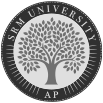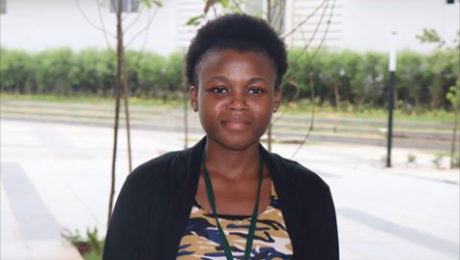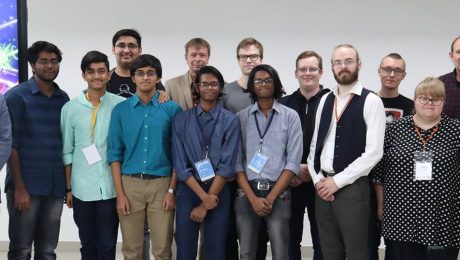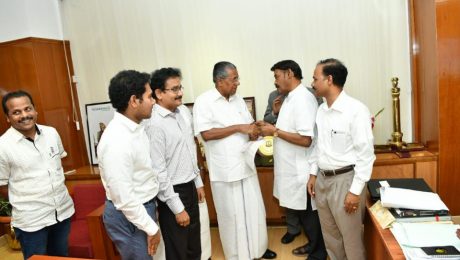Ms. Amina Baba Adam on becoming Campus Ambassador for IARC Center for United Nations
Ms. Amina Baba Adam, an International Student from Ghana who is from the B.Tech – ECE Branch has been appointed as the Climate Coordinator for COP+24 International Climate Change Program 2018-19, to work as the Campus Ambassador for IARC Center for United Nations at SRM University AP. Her primary role as Climate Coordinator is to drive registrations for COP +24 Short Course.
Link: https://www.facebook.com/srmapthestudentcouncil/posts/455730688181793
- Published in News
SRM Andhra Pradesh students win the first prize of IGDC 2018 Competition
Students from SRM University, Andhra Pradesh’s Next Tech Lab have been declared the champions of the Indian Game Development challenge 2018. The winning team “Incendium” comprising of Saptarshi Mazumder, Rajarshi Mazumder, Koushik Bhargav, Aneek Banerjee, Saurav Raj and Saurabh Ghanekar secured the top position in the Indian Game Development Challenge (IGDC) organised by Kajaani University of Applied Sciences (KAMK Finland) and APSSDC along with SRM University, Andhra Pradesh. IGDC required the participants to develop fully functional and playable games within the stipulated time of two months. A team of Finnish professors from KAMK, experts in their respective fields were here to mentor, help, support, guide and assess their progress over the period of two months.
- Published in News
SRM University contributes Rs.1.07 crore towards Kerala Chief Minister’s Distress Relief Fund
Amaravati, August 21, 2018: SRM University contributes Rs.1.07 crore towards Kerala Chief Minister’s Distress Relief Fund
The devastating floods in Kerala have already claimed several hundred lives. More than 700,000 people from regions of Kuttanad and Chengannur have been displaced from their homes and are in relief camps. SRM University Chancellor, Dr. T.R. Paarivendhar, the President Dr. P. Sathyanarayanan and the Vice – President Dr. R. Shivakumar met with the Honourable Chief Minister of Kerala, Shri. Pinarayi Vijayan on August 21, 2018 to pledge support and contribute Rs.1.07 crore towards the CM Distress Relief Fund.
- Published in News
Vice Chancellor Dr. Jamshed Bharucha attends “Architecting the Future Global University” conference at Lake Como, Italy
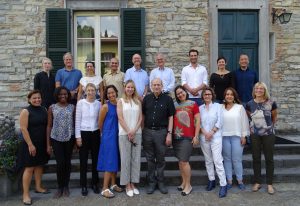
Rear from Left : Meredith Bonner, Rice University, Jim Chandler, University of Chicago, Amel Karboul, Education Outcomes Fund, Africa, Middle East, Jamshed Bharucha, SRM University, Amaravati, John Mitchell, Stanford University, Bror Saxberg, Chan Zuckerberg Initiative, Timo Kos, Delft University of Technology, Sarah Stein Greenberg, Stanford University, Robert Lue, Harvard University
Front from Left: Susan Winslow, MacMillan Learning, Tolu Agunbiade, African Leadership University, Londa Schiebinger, Stanford University, Mariko Silver, Bennington College, Caroline Levander, Rice University, David Leebron, Rice University, Cecilia Paredes Verduga, Escuela Superior Politécnica del Litoral, Robyn Norton, The George Institute for Global Health, Shireen Yacoub, Edraak, Deanna Raineri, Coursera

